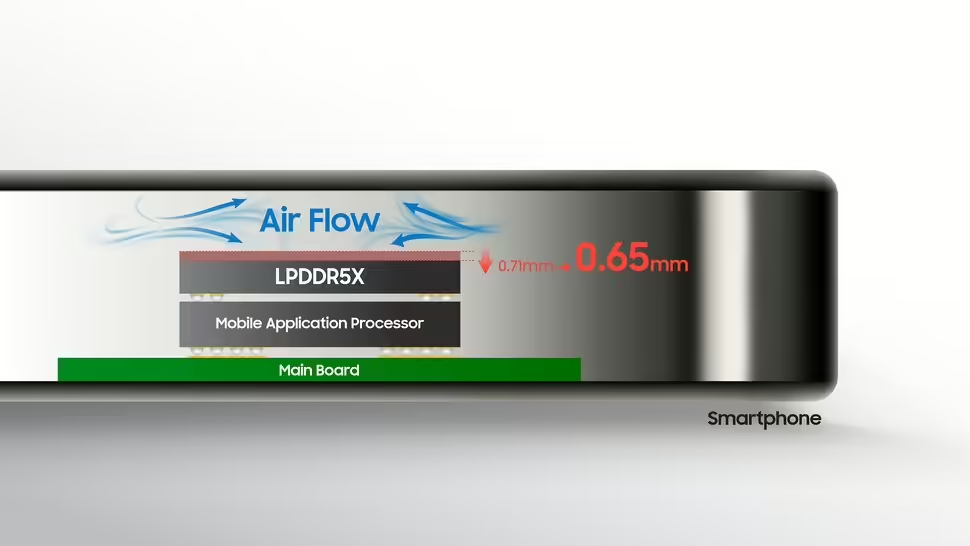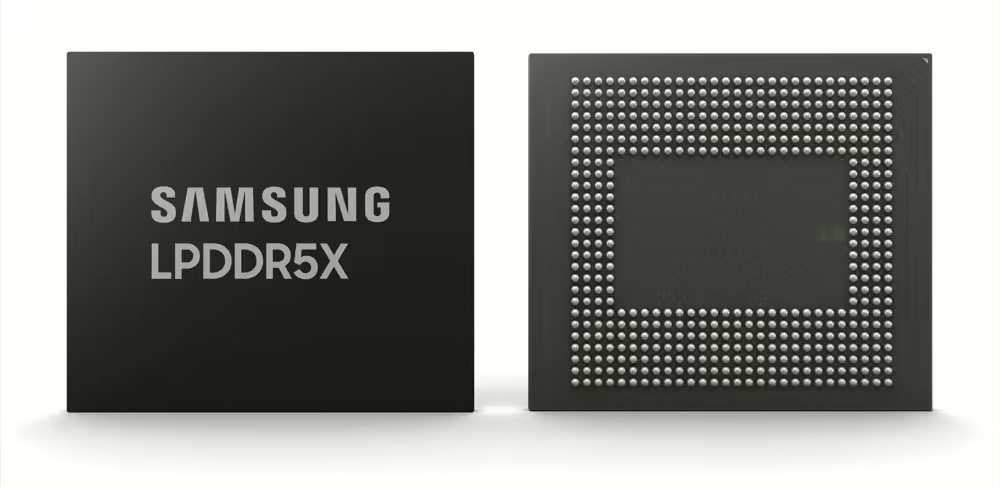Samsung has recently commenced mass production of the world’s thinnest LPDDR5X DRAM packages, available in 12GB and 16GB capacities. These advanced memory solutions boast a thickness of only 0.65 millimeters, making them the slimmest in the industry.
The reduction in thickness, by approximately 0.06 millimeters compared to conventional LPDDR5X modules, is achieved through a new packaging technique that includes optimized printed circuit board (PCB) designs and epoxy molding compound (EMC) methods.

These LPDDR5X DRAM packages employ a 4-stack structure and utilize a specialized back-lapping process, which further reduces the package height. This ultra-thin design not only facilitates better airflow within devices, enhancing thermal management but also supports high-performance applications, including those with advanced on-device AI capabilities.
According to Samsung, the new 0.65mm LPDDR5X packages offer 9% thinner dimensions and 21.2% better heat resistance compared to the previous generation.
Also Read: Samsung Spearheads Next-Generation Graphics with GDDR7 Memory
YongCheol Bae, Executive Vice President of Memory Product Planning at Samsung Electronics, emphasized that the new LPDDR5X DRAM sets a new benchmark for high-performance on-device AI solutions.
Samsung’s LPDDR5X DRAM sets a new standard for high-performance on-device AI solutions, offering not only superior LPDDR performance but also advanced thermal management in an ultra-compact package.
While these advancements significantly contribute to the potential for slimmer smartphones, they are part of a broader strategy. Smartphone manufacturers will likely combine these ultra-thin memory solutions with other techniques, such as using thinner protection glass, more compact printed circuit boards, and slimmer batteries, to achieve overall thinner devices.
Related: Samsung Confirms Exynos 2500 Chip, Likely to Power Galaxy S25 Series

Looking ahead, Samsung plans to expand its LPDDR5X offerings with even more advanced configurations. The company is working on developing 6-layer 24GB and 8-layer 32GB modules, which will continue to push the boundaries of memory performance and package compactness, although specific thickness details of these future modules have not been disclosed yet.

Leave a Reply
You must be logged in to post a comment.